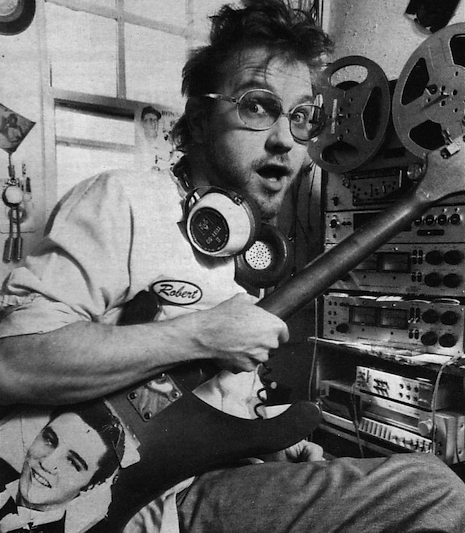
A version of this article first appeared on Night Flight’s website in November 2015.
“I HAVE NEVER HEARD OF THIS IN MY ENTIRE LIFE. Absolutely bizarre…”
That was R. Stevie Moore’s response in 2013 when I asked him about his knowledge of an obscure LP containing fantastic studio recordings he had made forty years earlier.
Moore, as many of you probably already know, is a pioneer in home recording and an early champion of the lo-fi aesthetic. He’s also a beloved cult figure and considered by many to be the godfather of indie rock. His best songs combine the pop hooks of Lennon and McCartney with the avant-garde stylings of Frank Zappa’s Mothers of Invention. In 1976, Moore, who had already been self-releasing his solo material on cassette, put out his first full-length LP, Phonography, which was issued on his own label, Vital Records. To date, R.S.M. has racked up more than 400 releases and has written thousands of songs.
Even with this huge catalog, Moore would have typically known what had been made available, but this was not the case with the aforementioned studio recordings. In 1977, this material was included on a self-titled LP credited to a fictitious group called Hotgun. The album was released by Guinness Records—a notorious tax shelter label.
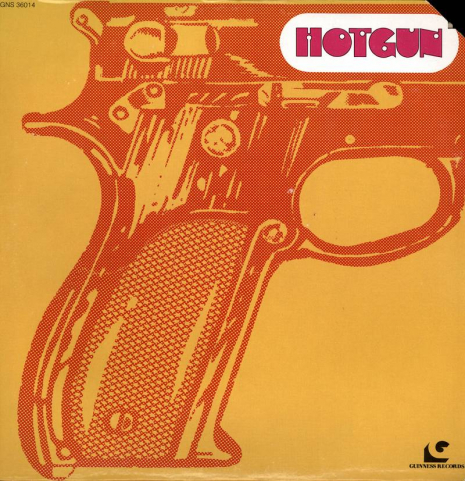
The Warhol-meets-Lichtenstein cover art for ‘Hotgun.’
In the mid 1970s, some savvy individuals identified a section in the U.S. tax code in which investments in sound recordings could qualify for a reduction in taxes. Situations varied, and the entire process was fairly involved, but essentially, this is how it worked.
The owner of a record label would solicit potential investors to license (or lease) a master sound recording from them, which would then be turned into an album. The program outlined by the label focused almost entirely on the tax benefits, rather than profit from the venture itself.
Generally, the label wasn’t even a record company in the traditional sense, and was established solely to market master recordings. Once an investor signed on and forked over their cash—ranging from a few thousand dollars to five figures—the label would take responsibility for overseeing the project. An essential undertaking for the label was having the master evaluated by an appraiser, one who was willing to place an inflated market value on the recording. There was much in the way of smoke and mirrors here.
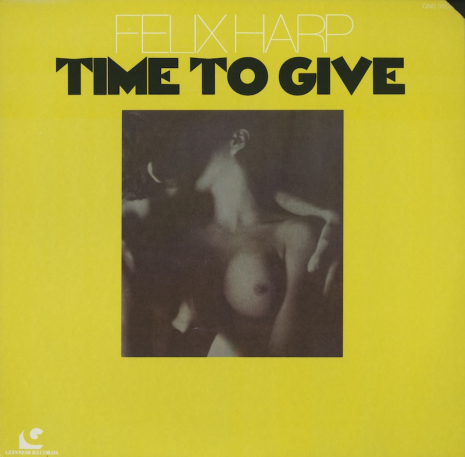
The striking cover art of ‘Time to Give’ by Felix Harp on Guinness Records.
For the next step, tapes were turned over to the packager, who was in charge of putting the finished product together, which included having the artwork created and pressing up the vinyl in a limited run of 1,000 copies.
Somewhere in the album’s credits was the name of an individual or company listed as the copyright holder. These are the names of investors. Though investors didn’t actually have any copyrights related to the recordings, there had to be documentation that they did in order to take advantage of the tax benefits.
At the final stages, the packager placed the completed product in stores. The packager was also responsible for marketing, though, in reality, there wasn’t any serious attempt to promote these records. Most of the LPs that did arrive in stores just sat in the racks, as few knew they existed. It’s believed that large amounts of records were warehoused or destroyed, which is why many tax shelter albums are so hard to come by.
When the LPs invariably didn’t sell, the master recording was written off by the investor as a failed venture, using the inflated appraisal—which went as high as seven figures—as the basis for claiming a loss come tax season.
Though the label, like any other business, could write-off expenses, their much larger slice of the pie came when they leased a master recording, earning thousands of dollars per transaction.
Two of the labels with the most known releases are Tiger Lily, which was operated by Morris Levy, the notorious owner of Roulette Records, and Guinness. The albums these labels released, many of which are now quite rare and sought-after by collectors, are commonly referred to as “tax scam records.”

The self-titled Bloodsuckers album on Guinness.
Tax shelter LPs typically consisted of demos, outtakes, or unreleased albums by artists that ran the gamut from total unknowns to the biggest names in popular music (even the Beatles). Tapes were obtained in various ways, acquired from wherever they could be found, including studio owners who often had reels of unused recordings gathering dust on a shelf.
It wasn’t uncommon for an album to be a hodgepodge of different recording sessions of varying quality, with multiple acts appearing under the same made-up name. There has been speculation that the eponymous Hotgun LP is one such record. Songs performed on an acoustic guitar in singer/songwriter mode sit alongside rock tunes boasting a compelling combination of glam, punk, new wave and Beatles-esque pop, while half of the album is made up of puzzling note-for-note cover versions of Top 40 hits from the 1970s. For years, record collectors have wondered: Could this really be the work of a single band?
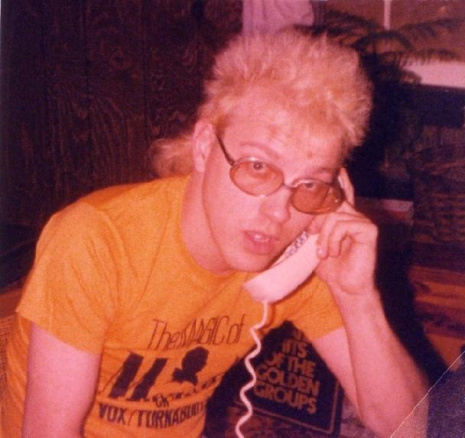
In 1971, budding songwriter and multi-instrumentalist R. Stevie Moore moved out of his parent’s house in Tennessee and rented a room in Music Row, the epicenter of the Nashville entertainment industry and the heart of American country music. But the songs Moore was writing didn’t fit in with the scene he had immersed himself in, and his lo-fi home recordings had little to do with mainstream country. Moore’s next-door neighbor was a musician by the name of Victor Lovera, and the two struck up a friendship. Turns out, Lovera was a kindred spirit, and their meeting would alter the course of Moore’s musical life.
“In the next room I heard this singer/songwriter guy. And he was from Long Island, New York, somehow down in Nashville. He was arthritic, had a cane, long black hair. He became one of my best friends and, you know, very influential for my songwriting. Real strange character, chess player, brilliant cat, a real renegade. He was always, like, a genius talent that really inspired me a lot.” (from R. Stevie Moore’s website)
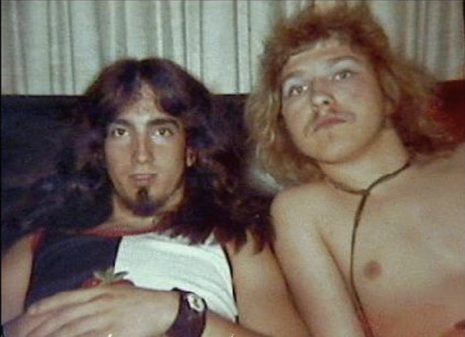
In the summer of 1973, Moore and Victor Lovera, then bandmates in the group Ethos, walked into the Nashville recording studio, Audio Media, to lay down some of their original material. Three of the songs taped during those sessions, “Home of the Nashville Bats,” “Love Graph,” and “Show Business,” ended up on the Hotgun album.
“Home of the Nashville Bats,” sung by Lovera, would’ve been right at home on Paul McCartney’s off-the-wall McCartney II LP, which wouldn’t come out for another seven years.
Imagine a scenario in which a deranged punk band is corralled just long enough to perform an off-Broadway salute to ‘50s rock, and you’ve got “Love Graph.” Here Moore takes the lead, screaming his head off and cackling like a madman. Dennis Burnside, a member of Audio Media’s house band, plays the Little Richard-esque piano part.
Another sung by Lovera, the Ziggy Stardust-inspired “Show Business,” is positively glamtastic.
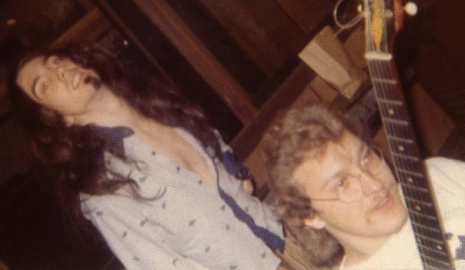
As for the acoustic singer/songwriter material on Hotgun, “And Pray Not to Get Joe Pepitone” was part of a batch of publishing demos Victor Lovera recorded in 1971 at Tree Publishing, also in Nashville. Another acoustic Lovera track, “My Father’s Son,” was likely recorded at the same demo session.
While “My Father’s Son” is clever, introspective, melancholy and lovely, the Hotgun opener, “And Pray Not to Get Joe Pepitone,” a look back at childhood, is the real stunner. It’s sung in a comforting style and possesses a light and breezy melody, the effect of which only leads the listener into a false sense of security; on closer inspection, this tale of boyhood ain’t exactly the rose-colored glasses type. The protagonist sings of a time when boredom leads to killing insects, curiosity about the opposite sex involves spying on an unclothed sister, and to get or not to get a duplicate baseball card felt like a matter of life and death.
Lovera’s skills are obvious here, as nostalgia in a song has rarely been painted so darkly vivid.
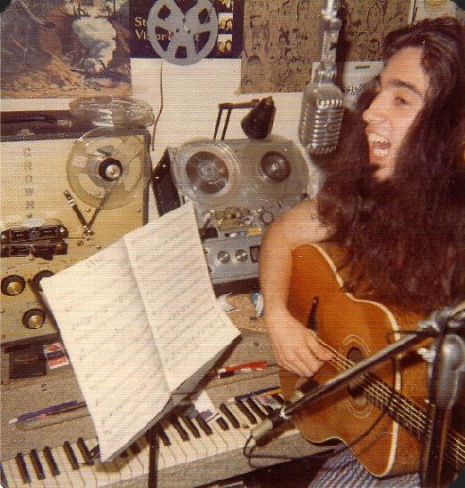
And what about those cover versions? Well, it turns out Audio Media specialized in cranking out soundalikes of popular songs of the day, which they in turn licensed for inclusion on budget LPs, purchased by consumers who apparently didn’t know—or didn’t care—that the remakes weren’t the original hits.
Though schlock is firmly ingrained in the DNA of “Afternoon Delight” and “Silly Love Songs,” and the cookie-cutter takes here are as grating as one would imagine, this is largely due to the fact that they come pretty darn close to sounding just like the originals.
The versions of Steppenwolf’s “Straight Shootin’ Woman,” the Souther-Hillman-Furay Band’s “Fallin’ in Love,” and John Lennon’s “Whatever Gets You Thru the Night,” are also faithfully executed, though the renditions are all spirited and entertaining (the bass line on “Whatever Gets You Thru the Night,” likely thrown down by Audio Media’s Jack Jackson, is blazing).
Audio Media obviously had a crack group of musicians at their disposal, and as enjoyable as some of these soundalikes are, their inclusion alongside the Moore/Lovera material makes for a very strange listening experience (neither Moore nor Lovera played on the cover tunes).
As bizarre as the sequencing on the Hotgun LP is, the Lennon remake leading up to the McCartney-ish “Home of the Nashville Bats” seems like a brilliant set-up—that is until one gets to the moment on the album when the proto-punk madness of “Love Graph” gives way to the inherently wooden “Silly Love Songs,” and it becomes apparent that little thought was put into how this record was assembled.
The Moore/Lovera tracks are expertly executed, with the twosome backed by Billy Anderson, a member of Ethos, as well as the previously mentioned Audio Media employee, Dennis Burnside, amongst other musicians. Dennis and his brother, Terry, had recognized Moore and Lovera’s potential, and the budding musicians were signed to Odyssey, the production arm of Audio Media. Paul Whitehead, one of the owners of Audio Media/Odyssey, engineered the Moore/Lovera sessions. Whitehead, who was contacted for this piece, was also impressed.
“[I have] the distinct memory of Moore being able to perform on ANY instrument with total control and an energy that I have never witnessed in a studio. I thought the world of Victor’s unique vocal sound and thought the two of the them would be wildly successful, but as I told them they would have to move to New York to even get noticed.”

As has often been the case with radical artists, Moore and Lovera suffered from being both ahead of their time and in the wrong geographic location. There was simply no place in Nashville for the type of music they were creating.
Soon, Terry Burnside would walk away from the music business, with Moore and Lovera moving on to other studios. The Audio Media recordings were subsequently shelved, before ending up on an album that wasn’t meant to be heard by anyone.
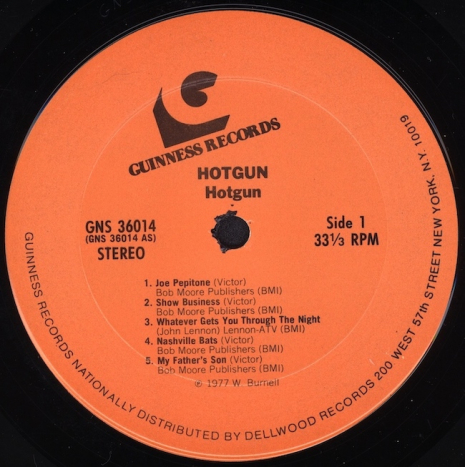
Note the abbreviated song titles, the partial writing credits for the Moore/Lovera tracks, and the use of Bob Moore’s name in the publishing (Bob is R. Stevie’s dad, and a legendary session musician, having played bass on countless recordings). R.S.M. is “clueless” as to why his father’s name was used.
Stan Hoffman was the vice president of Prelude Records, a successful disco label based in Manhattan. Hoffman owned Dellwood Records, which distributed Guinness. One theory is that Dellwood/Guinness were one and the same and existed as a tax shelter for Prelude (all three labels shared the same address, after all), but that wasn’t the case. In fact, Dellwood’s role was as packager for Guinness.
After issuing more than 60 LPs during 1977, which was also the only year the label existed, Guinness Records quietly vanished.
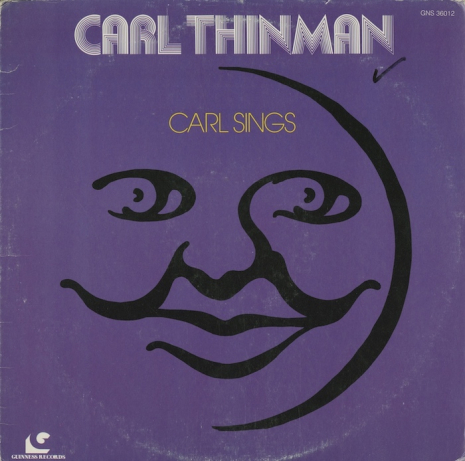
‘Carl Sings’ by Carl Thinman on Guinness Records. The album includes songs attributed to Dennis Burnside and Terry Burnside of Audio Media.
During the course of my research, I discovered who owned Guinness, and after a year of hunting high and low, tracked him down.
Longtime Miami Beach resident Marvin L. Popkin came up with the idea for a tax shelter record label in the mid 1970s. Quite the character—he says friends call him “El Marvo” and that he once lived next door to Al Capone—Popkin had dabbled in a number of business ventures, most notably real estate. “I built half of South Beach and Miami Beach with my parents, my uncles, my cousins.”
By 1977, he had already created tax shelters, offering investments in both film and coal, when the idea to start a tax shelter record label came along, and Guinness Records was born. Popkin, the sole shareholder in the company, hired the best accountants in the area, finding investors through word of mouth (“I knew everybody in Miami Beach”). He obtained the master recordings and then sent them along to Hoffman, who he remembers as a “nice guy.” Popkin admits that Guinness was a tax shelter, but contends it “was done properly, legally.”
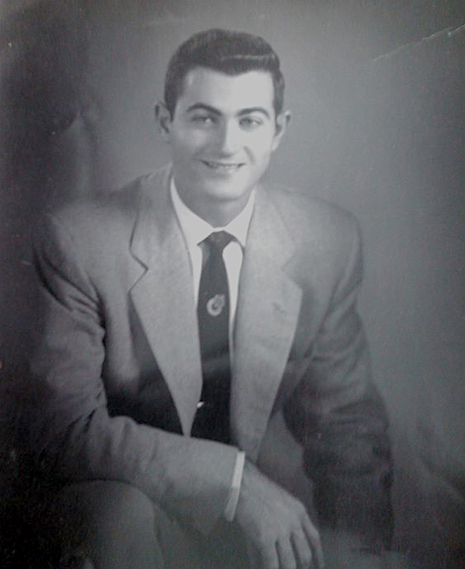
Marvin Popkin, circa early 1950s.
The person listed as the copyright holder for Hotgun is “W. Burnell.” Though Popkin was able to identify many of the investors in Guinness master recordings, most of whom where friends or associates, he couldn’t recall anyone by the name of Burnell, thus the identity of this individual remains elusive.
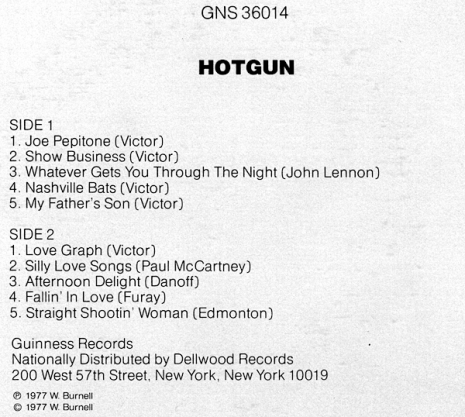
Album sequence plus the songwriting and copyright credits as they appear on the back cover. All Guinness releases have a similar, generic layout, with minimal credits in a modest black typeface on an all-white background.
So, how did Moore and Lovera end up on an album with anonymous cover songs? How did Guinness get the tapes?
Paul Whitehead, you’ll recall, as one of the proprietors of Audio Media/Odyssey and the engineer on the Moore/Lovera sessions, wrote in an email that though he couldn’t recall many of the details, he all but confirmed that in an attempt to recover some of the money lost on the recordings the studio made with Moore and Lovera, those master tapes, along with the soundalikes, were sold to Guinness.
“I have no recollection of the transaction per se with Guinness,” he told me, “though we probably supplied the balance of the content [the soundalikes] to fill out the album in an attempt to recapture costs incurred with the developmental recordings with Steve [Moore] and Victor.”
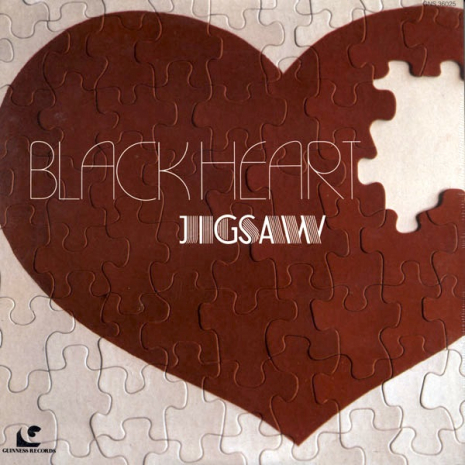
’Jigsaw’ by Black Heart on Guinness Records. The album was produced by Paul Whitehead.
In 1973, Moore and Lovera’s group Ethos released a 7-inch under the name Roger Ferguson with Ethos. By the mid ‘70s, the band was finished, though Moore and Lovera continued to work together, off and on, until Lovera’s death in May 1998.
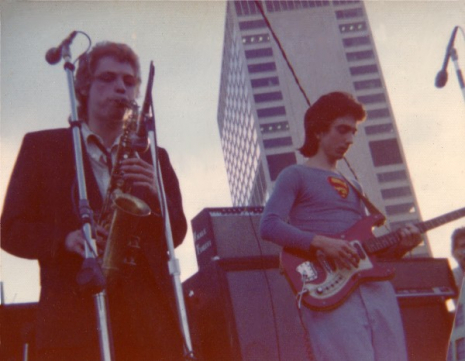
Roger Ferguson and Victor Lovera, 1974.
Moore has a Bandcamp page for his new and archival releases. It’s also how he keeps his friend’s legacy alive, having released many recordings showcasing the talents of Victor Lovera and their various collaborations. One title that Moore has made available is Studio Ethos, which contains the three Moore/Lovera songs found on the Hotgun album.
After our initial contact, Moore agreed to answer more questions regarding the Hotgun LP, but unfortunately had a change of heart. As shocked and amused as he was initially to find such an album existed, he also felt, understandably, that the record is “a little creepy.”
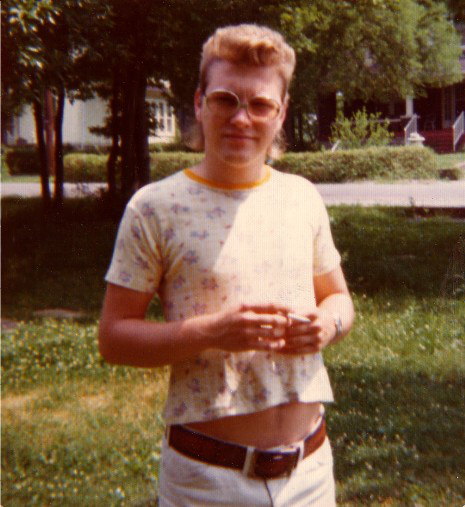
After Guinness, Marvin Popkin started an artwork tax shelter, which morphed into what he calls a “real” art business that lasted twelve years. Since then, he’s been involved in a myriad of endeavors, including a company called Classical Music Collection, which was established in 2011.
When I last spoke with him in 2014, he was residing in Miami and had just celebrated his 83rd birthday. He’s still tickled by the name he came up with for his tax shelter record label all those years ago, declaring, “I’m a punsmith.”
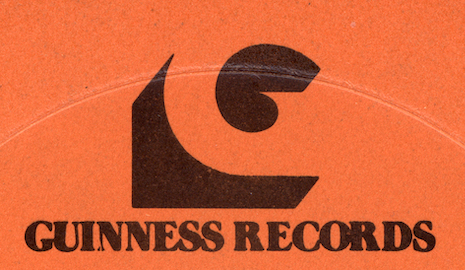
Tax shelters aren’t illegal, but by the early ‘80s the IRS was asserting that master recordings investment programs were often nothing more than fraud disguised as a tax shelter.
To combat the estimated billions of dollars in revenue lost thanks to fraudulent tax shelters, Congress passed the Deficit Reduction Act of 1984. One key provision required tax shelters be registered with the IRS before being offered to the public. This effectively put an end to “tax scam records.”
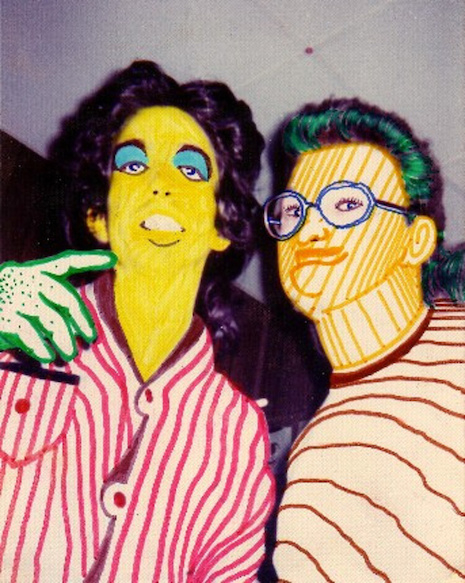
Super 8 video of Ethos performing at a Nashville street party on September 15th, 1974 is embedded below. The original footage is silent, so a radio ad for the event and “Home of the Nashville Bats” were used for the audio. The clip was spliced and hand-colored by R. Stevie Moore.
Marvin L. Popkin died on August 15th, 2016. He was 84.
R. Stevie Moore announced his retirement from music on New Year’s Eve, 2019.
We’ll leave you with the trailer for the recent documentary film, Cool Daddio: The Second Youth of R. Stevie Moore.
Previously on Dangerous Minds:
‘Tax Scam Records’: Artist discovers albums of his songs were released by shadowy companies in 1977
What’s Up Tiger Lily?: The wild story of the tax scam record label run by the notorious Morris Levy
The strange tale of the unauthorized albums of the Beatles Christmas recordings